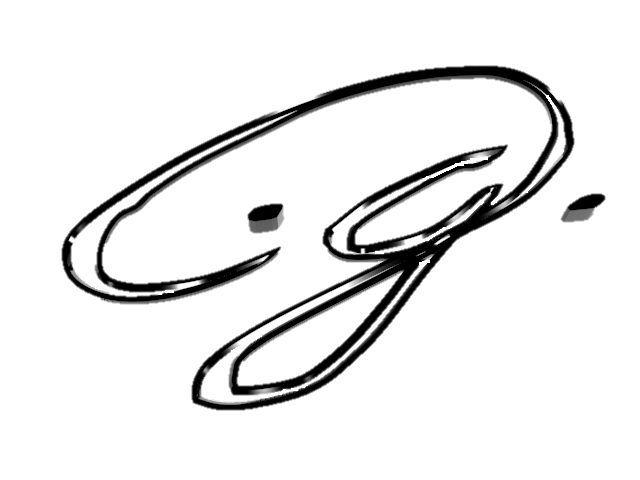Remote Chance of Success
The events of recent months have resulted in more people working from home than ever before. The resulting chaos and myriad distractions associated with this unanticipated transition have presented the newly-remote worker with a constant challenge. This article provides a glimmer of hope in a world where attention and sanity are becoming nearly as scarce as toilet paper.
Estimated reading time: ~7 min
“Isolation is the sum total of wretchedness to a man” – Tomas Carlyle
“Isolation is the indispensable component of human happiness.” – Glenn Gould
Those polarized quotes nicely capture the spectrum of opinions being shared on social media at the moment. Depending on your perspective, COVID-19 has led to either the greatest possible opportunity for a remote work revolution or just mass solitary confinement. Whether you see this as the opportunity of a lifetime or an unending visit to the bed-and-breakfast in Hell, learning to work from home effectively will make this a far more positive experience. In this article, I will share 4 major components of a successful work-from-home strategy to help you stay focused and stay sane.
Breaks and Rewards
Getting into the flow state, or at least hyper focused, rarely happens right when you sit down to work. Unless your job involves extreme sports or meditating while balancing on two fingers for hours on end, focus is achieved in stages. One of the primary reasons focus eludes even the most diligent among us is poor incentives and long, unbroken stretches of work.
Studies have shown that the average person has an attention span of about 25 minutes.
A couple of important things to note here:
- This is HIGHLY dependent on content and environment. If someone finds something deeply interesting and they are not surrounded by distractions, that attention span can become practically indefinite (think binge watching).
- This is just an average; attention span varies from person to person.
If you find your work deeply engaging and can focus for hours on end without issue, then you probably don’t need to read this article; so we will assume that your attention span is generally within a standard deviation or two of the 25 minute average. Under this assumption, your new best friend is called the Pomodoro Technique.
Pomodoro Technique
Developed in the late 1980’s by Francesco Cirillo, the pomodoro technique is named after the tomato timer Francesco used to meter out his study sessions as a university student. The Pomodoro Technique consists of working for 25 minute intervals (called “pomodoros”) interspersed with 5 and 15+ min breaks, using a timer to maintain the interval lengths. The original approach looked like this:
Work 25 min / 5 min break / work 25 min / 5 min break / work 25 min / 5 min break / work 25 min / 15+ min break
That is 4 pomodoros (25 min work sessions) separated by three 5 minute breaks and capped off with a longer 15+ min break.
I say “original approach” because it is the concept, not the exact structure that is important.
By scheduling out your breaks, you are promising your brain a rest and reward at a specific time. This curbs the constant desire to perform instant gratification tasks such as scrolling through social media or checking email. If you need to scratch that itch, you can do it during the break. That said, you will likely achieve a state of hyper focus much faster, and feel better, if you use those breaks to stretch, rest your mind, or go to the bathroom. And while I have found the 25 minute pomodoro to work well for me (guess I’m average), I recommend testing out different time intervals to find your own sweet spot. If you get into flow, turn off the timers and just ride it out as long as you can.
Meaningful Incentives
The pomodoro technique provides some positive incentives in the form of short breaks, but incorporating more meaningful goals and rewards into your work life is not only valuable for increasing productivity, but critical to developing a healthy career. If you are self-employed, goal setting is a no brainer; if you don’t do it, no one will. But if you are an employee, it can be easier to simply let your boss set the course and follow blindly.
For the vast majority of people, this is not sustainable. If you don’t find anything you do to be personally meaningful, you are going to struggle to focus. This doesn’t mean you have to have your dream job, or even like the work itself; you can set work-related goals with rewards that are personally significant. For example, if your boss has asked for a certain assignment to be done on Friday, you could set a goal to have it on his desk Thursday morning and promise to reward yourself with a spa night or a visit to a favorite restaurant if you succeed. Suddenly, your work will become more interesting, your boss will be happy with the results, and you will be able to focus better despite no change to the work itself.
IMPORTANT: If you promise yourself a reward, and you meet the requirements you set for yourself, give yourself the reward. If you get into the habit of lying to yourself, it will render these techniques useless and make everything exponentially more difficult.
Workspace Design
Physical clutter begets mental clutter and information consumes attention. If you are working in chaos, that 25 minute attention span may drop to 0. Your brain is able to tune out stimuli of consistent quality and intensity, but it is wired to notice changes. For example, you will quickly tune out the feel of the carpet beneath your feet, but you would notice if a spider crawled on your toe. Or you could tune out the visual stimulus of a paused movie in the background, but as soon as it resumes playing, it becomes distracting. There is also a certain amount of stress, though it varies person to person, caused by physical clutter; a clean, organized environment encourages mental clarity.

Manage your environment
Your optimal environment will depend somewhat on your attentional disposition, but assuming that changes to the environment and clutter consume attention and always invite some degree of mental chaos, here are some strategies to manage your environment.
- Clean your room/desk. Remove anything that is not immediately applicable to your work. This simple task can drastically reduce distractions. Ideally, you want the visual space to be absolutely static outside of what you are working on. If you don’t have control over the space, control yourself; sit/stand facing a wall or corner so that the chaos is behind you. Natural light is great for mental health, but try to avoid facing directly toward a window where you can see the changing scenery.
- Your phone is not your friend; put it away. The modern smartphone is productivity’s worst enemy. If you really need to check it more frequently than your scheduled breaks (and you probably don’t) at least put it out of sight the rest of the time. I keep mine behind my laptop, out of sight, as I work. Turn off notifications, put it on do not disturb, and only check it on breaks or when you absolutely have to. If you can, notify your coworkers that you will only be checking it at certain times during the day so they know when to expect a response, and when not to.
- Use headphones. Complete silence is preferable, but partial silence is dangerous because it magnifies every sound. If your work environment is chaotic, or quiet with periodic noise, use headphones to generate consistent auditory stimulus that is easier for your brain to tune out. Personally, I use Noisli to craft custom soundscapes which usually feature a heavy dose of pink noise. I would strongly recommend against listening to music with lyrics. Your brain is wired to pay attention to words and you will listen subconsciously for important information.
- Separate work and play/rest. Don’t work in bed and don’t sleep at your desk. Even if you work right down the hall from your bedroom (or IN your bedroom) try to carve out a distinct work space. A friend of mine told me that they go on a walk before starting work each day to simulate a commute; that is a great way to maintain a healthy separation between work and the rest of your life. The point is not to live a double life, it is just to prevent routines from crumbling and to give your brain clear signals to differentiate between where and when you are working or playing.
The Right Kind of Accountability
You don’t have a boss breathing down your neck or coworkers to impress, so what’s to stop you from spending the whole day online shopping for a new lawnmower? Other than the threat of losing your job, it can be hard to feel a sense of accountability when you are not in the office. However, video conferencing has come a long way and there are some tools out there that are filling the accountability void. The one I use is Focusmate.
Focusmate users book time slots on a shared calendar and keep each other accountable over video. You are free to use the time however you want, but there are some community guidelines that most people follow. The first minute or two is spent sharing what you intend to do during the session, most people keep the camera on, but microphone muted for the duration of the call, and then you share what you accomplished at the end. That’s it. And it is incredibly effective.
A non-critical third party provides all of the benefits of workplace accountability, with none of the downsides, encouraging productivity without discouraging thoughtfulness. In an office, there is social pressure to always look busy even when you have long since lost the ability to focus. With Focusmate, you can take your 5 minute stretch break after a pomodoro without catching side-eye from your coworkers and you can space out your sessions to avoid burnout.
A Personalized Approach
You are free; take advantage of that! This is a chance to establish work habits that actually make sense rather than just following the 9-5 sit fest. Challenge all of your own assumptions about what work is supposed to look like and create a personalized approach.
- Vary up your position. If you usually sit at a desk, try a standing desk! If you usually stand, try walking while you work!
- Try new tools. There are a practically infinite number of resources online to make different tasks easier. If you do a lot of typing, consider a speech-to-text program. If you use excel as your all-in-one data tool, check out some business intelligence software. There is a tool for everything, look around!
- Change your schedule. If you are on a team, you may still need to be available during regular hours, but that doesn’t mean you have to follow the same routine you did in the office. If you need to be available from 9-5, but you like to work early in the morning, try starting at 7! Get some solid work in early and take some time off in the middle of the day. As long as you can still be reached during that new break, no harm done. When I started working remote, it took me a couple weeks to have the epiphany that I could now work out in the morning like I had always wanted to. How can you modify your schedule to improve your lifestyle and productivity?
- Take time to think. You don’t need to look busy, you need to deliver results. Rather than jumping into a task for the sake of looking like you are hard at work, take time to think it through, determine the best approach, then execute. Don’t look good; do good.
Some people dream of working from home, others dread it; regardless of which group you are in, there has been no better time to try it out and learn to do it successfully. Take breaks, create meaningful incentives, manage your environment, manage your time and attention, get positive accountability, and make your work and your workspace your own. Be your own boss and be a good one.
WANT TO LEARN MORE ABOUT HOW TO TAKE BACK CONTROL OF YOUR ATTENTION? I’VE GOT YOU COVERED.



I can attest to the importance of a clean work environment. Working from an RV with 4 kids has presented some unique challenges. So I often put my headphones on which helps a ton.
One thing I would add is to add in movement breaks.
Stretch a bit, do some air squats, shadowbox, whatever it takes to move around.
I like to do these during my Pomodoro breaks.
I have found that box breathing helps me reset
Yeah! I used to use box breathing to stay awake in high school. 🙂 I’m not sure about the science behind this; perhaps it is just that the act of monitoring breath forces greater awareness and focus. If you are interested in breath work, you should check out this podcast episode, I found it quite fascinating: https://superhumanacademy.com/podcast/controlling-our-physiology-through-our-breathing-niraj-naik/